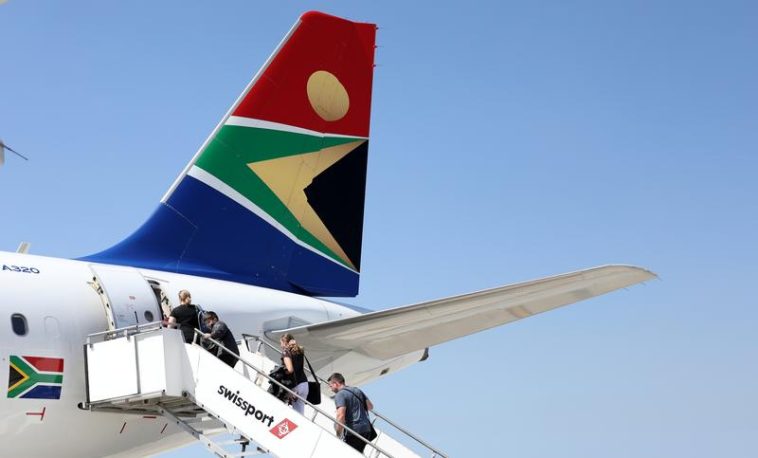According to Sithole, the GEPF, Africa’s largest pension fund, has never been asked to fund SAA.
- “I don’t think even our colleagues at the PIC [Public Investment Corporation] have ever been approached to fund SAA. The fact that people always focus on SAA amazes me,” said Sithole.
Labour unions have accused SAA’s board and Public Enterprises Minister Pravin Gordhan of excluding them from the critical process.
- “We want to be involved in the business rescue process, so that our plans to save the airline are considered and implemented… We want engagement on the turnaround strategy. Unfortunately, the board and department […] chose not to cooperate,” the unions said.
They say they’re worried about the board retaining control over the state-owned entity.
Unions unite
Trade union, Solidarity requested a high court order on November 21, to place the airline under business rescue.
Another two unions – the National Union of Metalworkers of South Africa (Numsa) and the South African Cabin Crew Association (Sacca) – threw their weight behind Solidarity’s court application.
A court order would have given the unions more influence over the process.
However, voluntary business rescue allows SAA’s board to retain control over the appointment of a business rescue practitioner.
10,000 jobs on the line
More than 5,000 jobs are at stake at SAA alone.
Another 5,000 jobs are at risk at SAA’s subsidiaries, including Air Chefs, Mango, SAA Technical, and South African Travel Centre.
Gordhan says he fully supports the board’s decision to place SAA under business rescue.
- “The full recovery of capital and interest on existing debt provided to SAA by existing lenders that is the subject of existing government guarantees will not be impacted by business rescue,” according to Gordhan.
To trade or not to trade
SAA has failed to file its annual financial statements for two consecutive years. The airline has also missed two successive deadlines to table its annual reports in Parliament.
By failing to file the national carrier’s financials, the airline’s board of directors are in breach of legal provisions contained in the Companies Act.
- Voluntary business rescue also protects SAA’s directors against the risk of breaching the Companies Act for failing to file SAA’s financial outcomes.
It remains unclear whether the airline has operated as a going concern. If not, the company has been trading recklessly, which places the directors in the regulator’s crosshairs.
This could be the reason behind SAA’s brisk handling of the problem.
It quickly submitted a business rescue application to the regulator – the Companies and Intellectual Property Commission (CIPC) – and appointed Les Matuson as the practitioner.
Gordhan has promised to urgently meet with the business rescue practitioner, labour unions, and other stakeholders.
- According to Gordhan, he wants “to create a positive set of relationships and processes, which will ensure that there is a collective approach and optimal consensus on the direction of this company”.
Rescue package
As part of the business rescue process, SAA will receive:
- R2bn government guarantee from existing lenders.
- R2bn from government to be disbursed in a “fiscally neutral manner”.
The business rescue practitioner can salvage or discard any aspect of the business, but jobs losses seem inevitable.
Making room for private equity
Partial privatisation of the national carrier may be on the cards.
Government could also bring in a private equity partner to rescue the ailing firm.
- “The creation of a sustainable, competitive and efficient airline with a strategic equity partner remains the objective of government through this exercise,” according to Gordhan.
The bottom line: Over several years, SAA has accumulated billions of rands in debt in the form of government guarantees. This time it seems like the clock has run out for the airline which is facing major restructuring.

